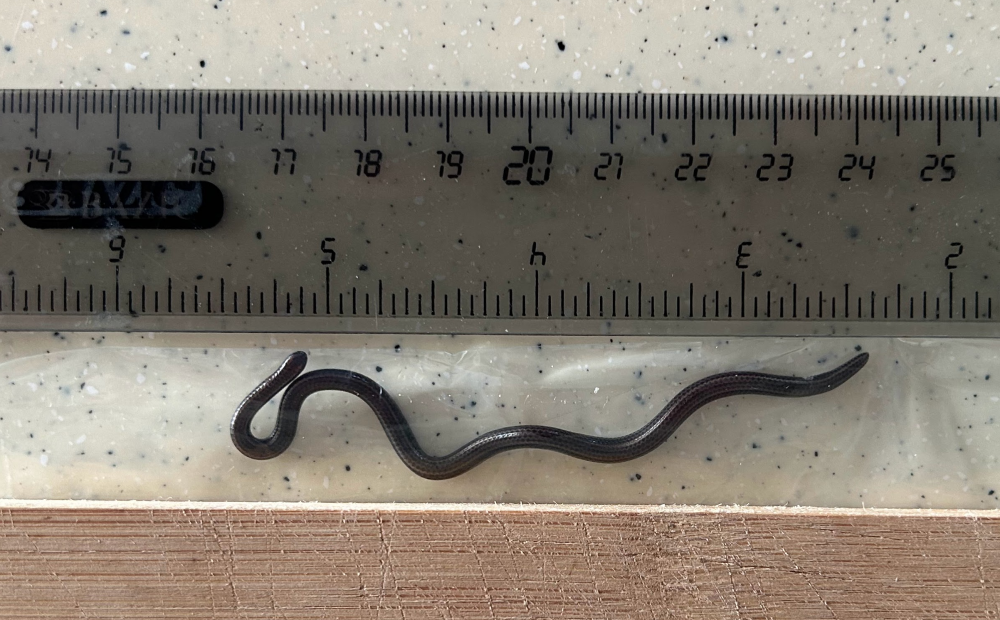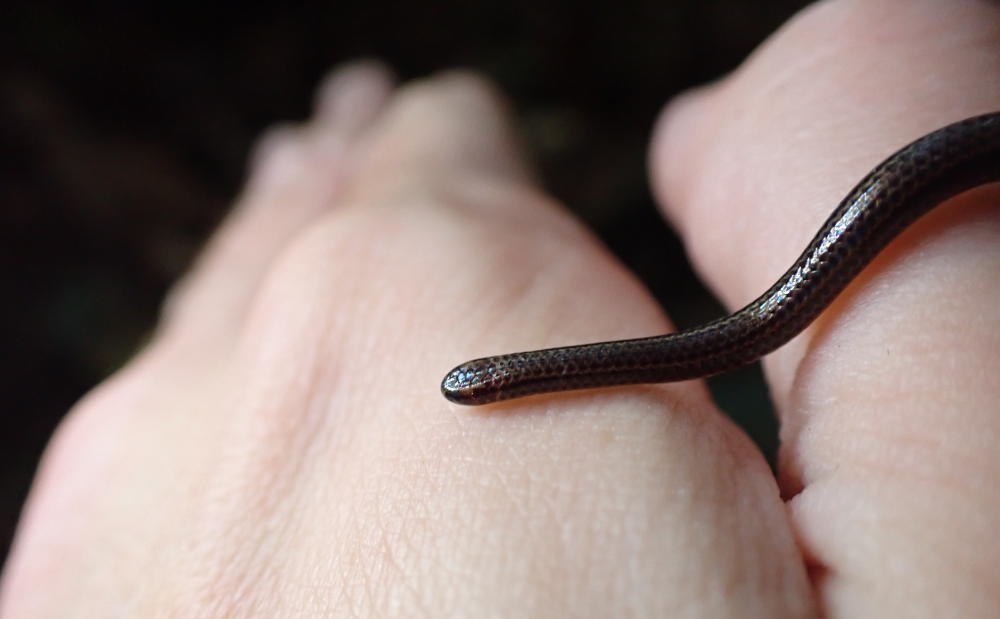In what must have been like looking for a needle in a stack of small, wiggly needles, scientists have rediscovered a “lost species” of snake that’s so small, it makes a coin look massive. The Barbados threadsnake (Tetracheilostoma carlae), the smallest snake in the world, was rediscovered under a rock in central Barbados during an ecological survey back in March.
There’s still a lot that we don’t know about their habitat preference or demography that could help surveys or conservation planning.
Connor Blades
The Barbados threadsnake had been lost to science for 20 years, earning it a spot on a global list of 4,800 lost species of plants, animals, and fungi compiled by Re:wild’s Search for Lost Species. The Barbados Ministry of the Environment and Beautification had been searching for the threadsnake for more than a year as part of the Conserving Barbados’ Endemic Reptiles (CBER) project when the happy discovery was made.
Measuring a piddly 9 to 10 centimeters (3 to 4 inches) long at adult size, it really is a mini one. Past sightings were separated by tens of years and further complicated by the fact that the Barbados threadsnake closely resembles the Brahminy blind snake, an invasive species that was only recently introduced to Barbados. The differences are so subtle that scientists need a magnifying glass to tell them apart, and given how small they are, it figures that the species would be an easy one to lose track of.

Can the Barbados threadsnake comprehend a ruler? Who knows what it has space for in that tiny, tiny noggin.
Image credit: Connor Blades
Now, it’s made its triumphant return with some dazzling photos to boot. Proof that though the world marches on, the Barbados threadsnake remains as adorably mini as ever. So, just how hard is it looking for a snake that’s so small? Logistically, tricky, but it can be a more hopeful endeavor.
They live in termite’s nests and release secretions that basically trick termites into not attacking them – that’s pretty cool.
Justin Springer
“The way I see it, larger animals are just more likely to have been seen than smaller ones, so if a larger animal goes unseen for long enough to be considered ‘lost’ then in my head there’s less hope it’s still there,” said Connor Blades, Consultant Technical Project Officer at the Ministry of Environment and National Beautification, to IFLScience.
“A smaller animal, certainly at the scale of the threadsnake (no pun intended), is already hard to find. It being missing may be less likely because it’s gone, and more likely because they’re just very cryptic or fewer people are looking.”
It seems their size may be more significant in terms of how hard it will be to learn anything about them now that we have found them again.
“Because they’re so small, they’re very difficult to study without harm, so there’s still a lot that we don’t know about their habitat preference or demography that could help surveys or conservation planning,” added Blades. “Their size also complicates identification, particularly as we have another similar-looking species, the Brahminy blindsnake, on the island. That complicates assistance from citizen science or online reporting because identification of these animals should be done in person by experts to ensure reliability.”

Telling the Barbados threadsnake apart from a Brahminy blind snake requires a magnifying glass.
Image credit: Connor Blades
We are, however, already aware of a very sneaky way in which the threadsnake hunts.
“I think one really interesting thing about the family of snakes (Leptotyphlopidae) from which the threadsnake is found is that while we know they eat ants and termites; they live in termite’s nests and release secretions that basically trick termites into not attacking them – that’s pretty cool,” Re:wild’s Caribbean Program Officer Justin Springer told IFLScience. “There’s still a lot left to discover and learn about the Barbados threadsnake, which also makes them intriguing and encourages us to protect them.”
“In Barbados and much of the Caribbean, there is a general fear of snakes and unfortunately, our endemic Barbados racer (Erythrolamprus perfuscus) has for a while now been declared extinct. I think this rediscovery is important to highlight the importance of what we have left, and also to show that these very small and delicate, harmless snakes are important and need protection.”
A further argument for their protection is the species’ lineage, belonging to an early diverging group of snakes known as the Scolecophidians. They’re known from fossils that date back to the Cretaceous, but likely originate from the Jurassic, as they show a global distribution that suggests they were once on the supercontinent Gondwana. As it split up, it took the tiny snakes with them, and Blades says it’s likely the threadsnake rafted its way to Barbados from somewhere else in the Americas.
Not bad for a wee noodle.
Source Link: The World's Tiniest Snake Was Lost To Science For 20 Years. Now, It's Back, And We Have Photos